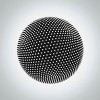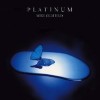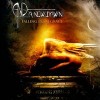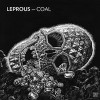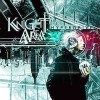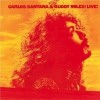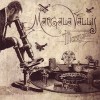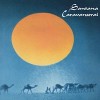"The phrase, "A New Dawn" has become one widely used these days with the ascension of the Obama presidency in the United States, and certainly, that is a breath of fresh air for most of us. However, it’s also a good time for a metal band, with that phrase as a name, to make a serious arrival on the international music scene.A New Dawn isn’t really new. They’ve actually been around since 1998 in one form or another, although they began as a side project. Several demos and one semi serious EP and DVD later, the band has released the title under review here and is primed for a run at the big time.The band is a 6 member group headed up by a duel female lead. That lead, Sanne Kluiters and Jamila Ifzaren do something of an operatic front end. The guitars are provided by Elbert de Hoog, bass by Michel van Beekum and drums are compliments of Rik Bruineman. The final member is Michiel Glas whose responsibilities include vocals and grunting. Poor Michiel has the unenviable task of replacing the lovely Monica Janssen who played bass and was clearly the most impressive female grunter in metal. She was always, for me, a significant interest in this band and will be missed, but, as they say, the show must go on.It should be noted, however, that this CD was actually produced with a different lineup, and Monica is the grunter and bass player here. The additional clean vocals are done by a friend of the band, David van Santen. Willem Cremer performed on guitar and Peter van Toren did drums on this recording. With the completion of the CD, the changes came about, so this is the swan song for Monica. And that’s unfortunate but certainly not devastating. Lineup changes in European bands, unlike many American bands, are like changing your clothes in the morning.Doesn’t matter really who does the grunting, this is a B & B Gothic metal band. That Beauty and the Beast approach serves as the focus of A New Dawn and carries through much of the music presented here. And, as B and B bands go, this one is pretty good. They’re Dutch of course, and utilize a style found in numerous western European bands, even if the composition is a little unique. The sound, however, is pretty much mainstream metal, with a few twists.Falling from Grace opens with a beautiful little piece called Black Lotus, the two female leads doing an operatic harmony over a lovely symphonic background. You get the feeling we’re in for a lovely bit of harmonic Gothic, heavily orchestrated. Something like what we’d hear for a movie about life in the Middle Ages. David van Santen even joins in with a lovely male vocal component to augment this direction. The tome lasts some 1:22. . .. and then things change.As mentioned previously, A New Dawn is Gothic Metal, fairly hard Gothic Metal over a solid guitar base. The vocals, the female vocals anyway, are operatic, but they ride a cushion of heavy guitars to get where they’re going. Living Lie begins this journey, and pretty much introduces the real A New Dawn. And Monica’s grunting provides a highlight to the composition.Arguably, the most interesting song might be the following title, Veil of Charity. It made the Sonic Cathedral release A World of Sirens and gets significant airplay on the radio outlet. The song opens with an interesting guitar line over a metal core. Things heat up fast and flow to the duel female lead, which is juxtaposed against the grunting female vocals. This is, of course, the core of the A New Dawn sound and is probably the best implementation of that sound on the CD. Guitars are always secondary to the vocals with A New Dawn but they cannot be ignored, especially on this title. They are solid and get significant solo time, as well they should.The CD being somewhat new I haven’t been able to get lyrics online. However, the English of singers Kluiters, Ifzaren, Janssen and David van Santen is excellent so you can pretty much understand everything they’re singing. That’s not always the case with European bands, especially as they move further to the east. When you get to the Russians, they quit trying.A New Dawn does most of its work in heavy mode. However, there are exceptions. Wisdom of Hindsight is actually something of an acoustic number, at least at first. Vocals are different as well. The band does a sound like a Medieval Folk song on occasion, and this is one of those numbers. However, even here, the metal comes back at some point, but the movement back and forth is really interesting. There are almost three or four distinct styles here in one song.The acoustic sound carries through on other numbers as well, especially as an intro. A short number, Prelude to a Farwell, uses this technique to serve as a mid point on the CD, almost like an intermission, very beautiful and moving.That midpoint takes us to the second part of the CD, introduced by Kissed Goodbye. Again, the song starts slowly with a moving guitar that takes us to the lead female vocals. It should be pointed out that these vocals are not all that similar and are used differently, even when done at the same time. One is more operatic, the other less so, and they work in different ranges. Very different in the style and effect. Anyway, the slow stuff doesn’t last long, the guitars crank up and the metal goes full tilt.Much of the second part of the CD follows this format, slow and dreamy intros that lead to a crunching guitar guiding the female vocals to their face offs with Monica’s grunting.The final number, Ascension, Part III, is worth mentioning. It’s been a favorite of mine for some time and has video clips on YouTube where you get to see Monica (and the rest of the lineup at that time) in performance. This is one of the songs where the grunting is more up front, the guitars are a bit harder and we get the image of A New Dawn on stage. Of course, the two female vocalists are a delight and the band performs this number in much the same style as they would on stage, there is an electricity to their sound that transcends the recording.I’m sure that, in all respects, the band is every bit as good as ever, but I’m sure going to miss that little brunette bass player with the killer voice. Fortunately, we still have the strong contributions from the two female leads who carry the majority of the load.Oh well, progress is inevitable, and, in this case, we move with the tides. A strong offering from a band we will, no doubt, hear much more from in the future." - Sonic Cathedral
$17.00





